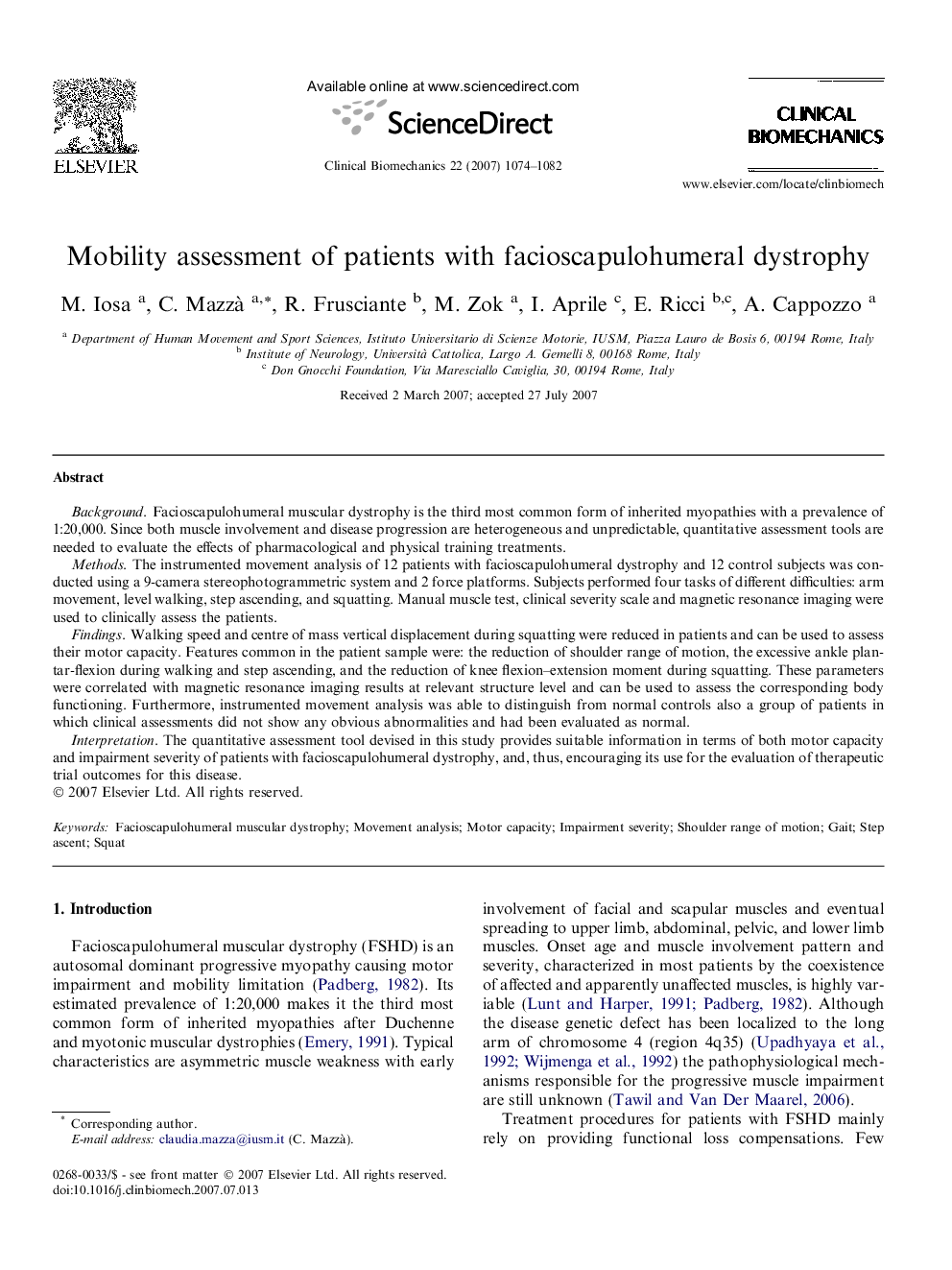| Article ID | Journal | Published Year | Pages | File Type |
|---|---|---|---|---|
| 4051720 | Clinical Biomechanics | 2007 | 9 Pages |
BackgroundFacioscapulohumeral muscular dystrophy is the third most common form of inherited myopathies with a prevalence of 1:20,000. Since both muscle involvement and disease progression are heterogeneous and unpredictable, quantitative assessment tools are needed to evaluate the effects of pharmacological and physical training treatments.MethodsThe instrumented movement analysis of 12 patients with facioscapulohumeral dystrophy and 12 control subjects was conducted using a 9-camera stereophotogrammetric system and 2 force platforms. Subjects performed four tasks of different difficulties: arm movement, level walking, step ascending, and squatting. Manual muscle test, clinical severity scale and magnetic resonance imaging were used to clinically assess the patients.FindingsWalking speed and centre of mass vertical displacement during squatting were reduced in patients and can be used to assess their motor capacity. Features common in the patient sample were: the reduction of shoulder range of motion, the excessive ankle plantar-flexion during walking and step ascending, and the reduction of knee flexion–extension moment during squatting. These parameters were correlated with magnetic resonance imaging results at relevant structure level and can be used to assess the corresponding body functioning. Furthermore, instrumented movement analysis was able to distinguish from normal controls also a group of patients in which clinical assessments did not show any obvious abnormalities and had been evaluated as normal.InterpretationThe quantitative assessment tool devised in this study provides suitable information in terms of both motor capacity and impairment severity of patients with facioscapulohumeral dystrophy, and, thus, encouraging its use for the evaluation of therapeutic trial outcomes for this disease.
